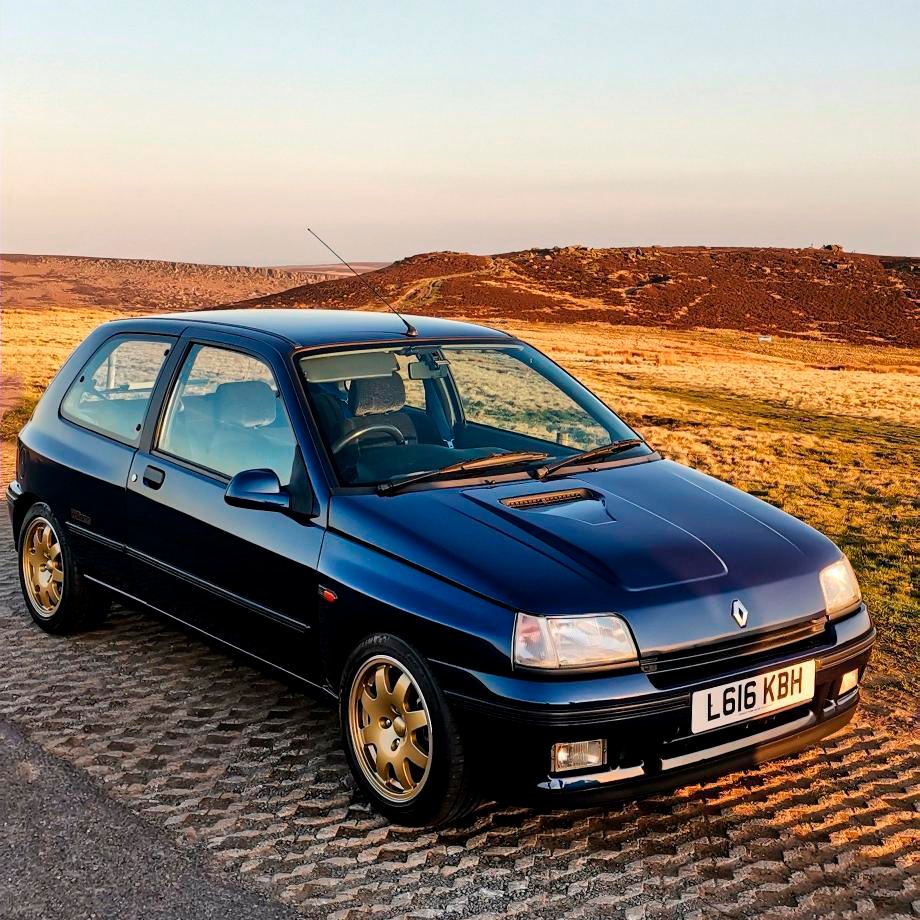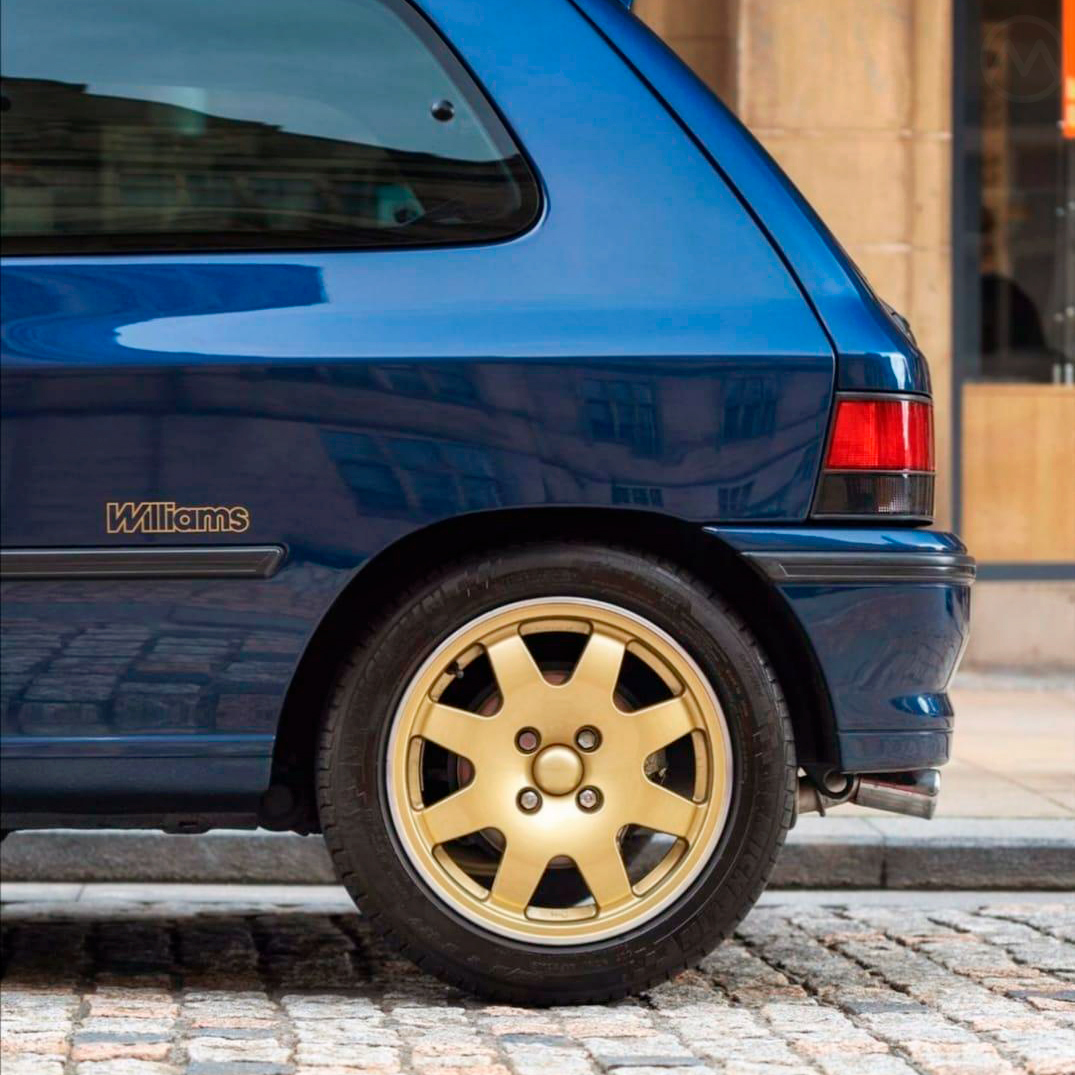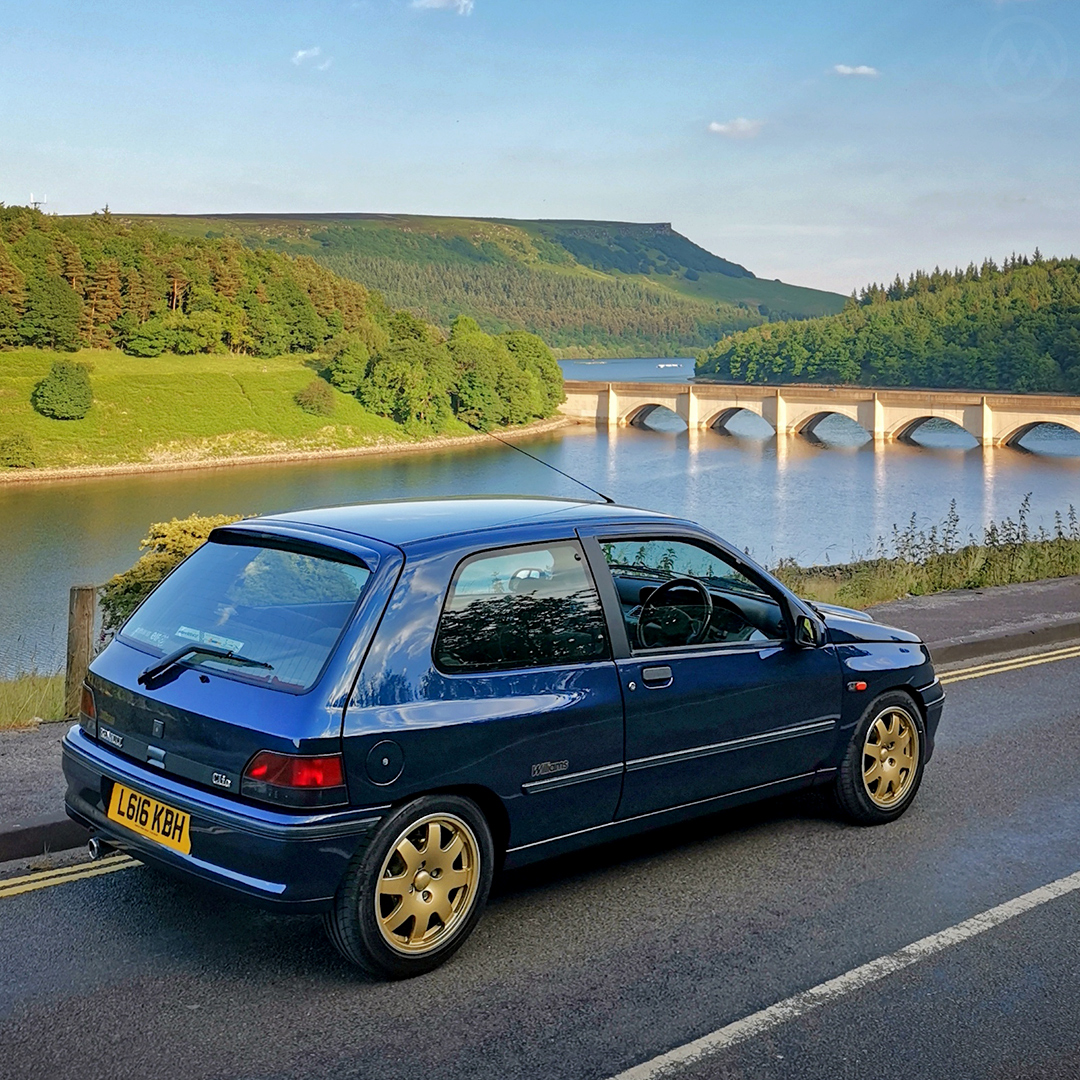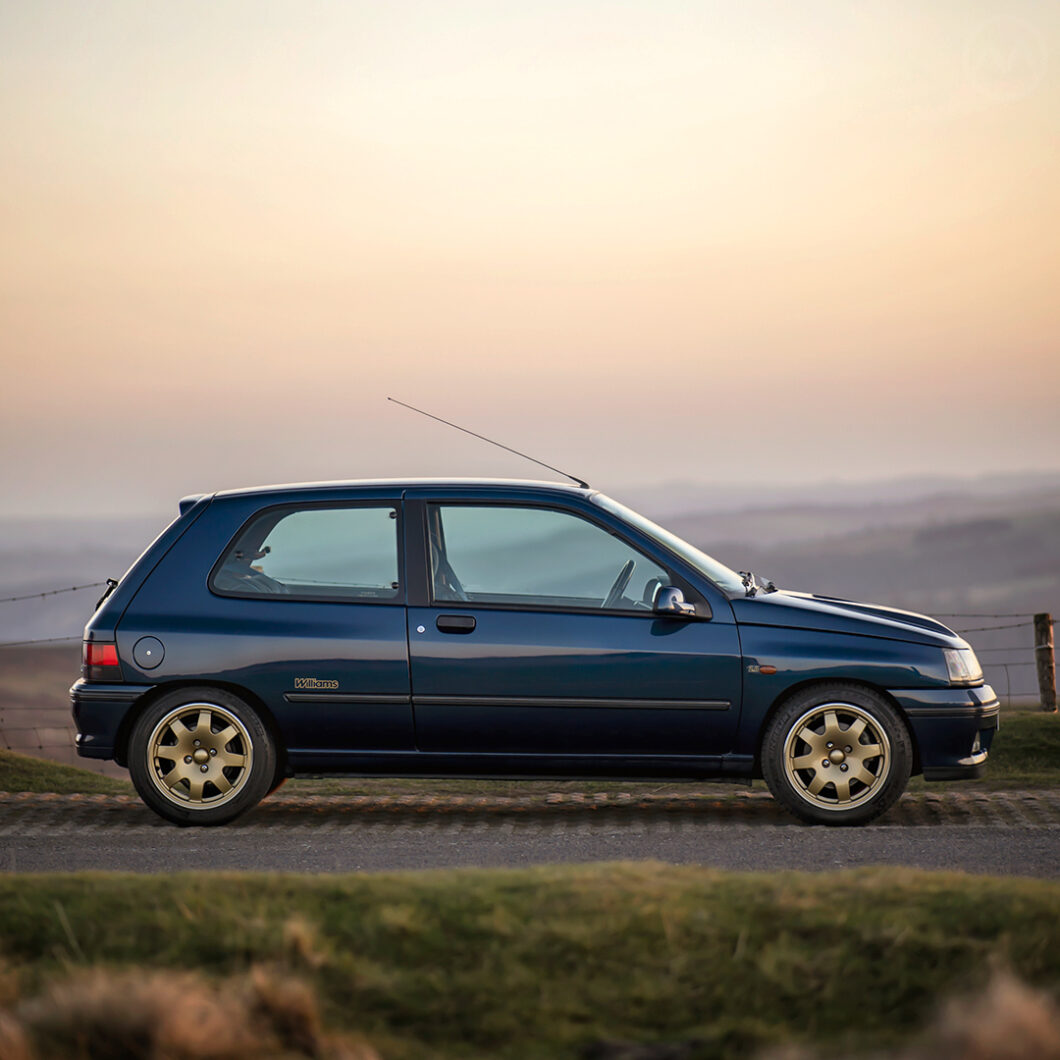These pictures look like screenshots from Forza Horizon 4, but I assure you they’re real. We mostly post original photos, but because Renault exited the U.S. market in 1987, there are very few Renault Clios of any kind to photograph in the United States, let alone a Williams. Happily, reader Lee Sunderland sent in these photos of his early U.K.-spec Clio Williams back in 2021.
This car is No. 263 of the original batch of 390 U.K.-spec cars. The Clio itself was three years old when the Williams was unleashed, and Renault had two goals in mind: dethrone the Peugeot 205 GTI as king of the hot hatches and go big in Group A and N rallying. Renaultsport designed this hot Clio, but their name was only applied to later versions of the car. In 1993, Renault had a much more high-profile name to tie its performance cars to: Williams.
Williams-Renault
Frank Williams’ F1 team had won the 1992 F1 championship with Nigel Mansell and repeated the feat in 1993 with Alain Prost, both with Renault power. Even though there wasn’t a direct connection with the Clio road car, that PR was just too valuable to let go to waste, hence the Clio Williams instead of the Renaultsport Clio.
In the 1980s, the 205 GTI had seen off almost all of its competitors, including the potent Fiat Uno Turbo and Renault’s own R5 GT Turbo (the second-generation “Supercinq” front-drive one, not the mid-engine version that debuted in 1980). But the 205 was a decade old in 1993, and the Clio 16V (also called the 16s or Clio 16 Soupapes) was already nipping at its heels. The R5 GT Turbo had also done well in Group N rallying, and Renault needed a successor.

Renault Clio
Work on designing the Clio itself started not long after the Supercinq went on sale in 1984, and it debuted in France in the summer of 1990. It was meant as a direct replacement for the R5 and heralded a full transition to named models rather than alphanumerics, but demand for cheap versions of the R5 remained strong, and Renault kept the low-end R5s on sale for another six years.
One of the last Renaults created before the stylistic tenure of Patrick Le Quément, the Clio was penned under the direction of longtime Renault veteran Gaston Juchet, who had designed Renaults as far back as the R16 and R6.
The “all-new” Clio was underpinned by a new chassis, but one that used many older pieces from the Supercinq and the later R9 and R11 (better known to Americans as the Alliance and Encore). Power came from Renault’s newer E and F engines as well as the olde Cléon-Fonte, which dated back to 1962.
The contemporary 1990s styling, the car’s keen handling, a helpful boost from winning the 1991 European Car of the Year award, and clever ads generated big sales for the Clio from the start, and it was well-received in most European countries. A sporty version soon followed, the 16V, with a 1.8-liter twin cam borrowed from the larger Renault 19, 135 horses, and, of course, 16 valves.

Soupapes, 16V and Clio Williams
The 16V would do 130 mph and was quite athletic, but somehow still not seen as quite as athletic as the departed R5 GT Turbo or the 205 GTI. Renault also wanted to be able to build a lightweight Clio rally car, but also wanted a 2.0-liter engine to take maximum advantage of displacement rules. Knocking off the 205 and homologating a 2.0 were two desires that dovetailed pretty well with each other.
Although work began by enlarging the F7P engine in the Clio 16V, the eventual Clio Williams engine, the F7R, it wasn’t just a bored-out version of that earlier engine. Renaultsport punched it up from 1,764-cc to 1,998-cc by widening the bore and lengthening the stroke, but also fitted bigger valves, hotter cams, lightweight manifolds, an oil cooler and a super-strong crank borrowed from a Clio Diesel engine.
Those were only engine changes, though the car itself also received several upgrades in style and mechanical specs.
The front subframe from the racing Clio Cup was swapped in along with thicker anti-roll bars, beefier suspension arms and a wider track, with the Gold Speedline rims as an added bonus. It got a muscular exterior makeover and all were painted No. 449 Metallic blue. 2,500 needed to be made for rallying, but the initial run was 3,800, all numbered to ensure exclusivity (and therefore fanboi desirability, which is still true today).
The modifications to the already light and lithe Clio 16v made the Williams into a serious road burner, and the torch was summarily passed from the soon-to-go-away 205 to the Renault. It also became a popular and successful rally car, helped by the fact that even in stock form it only weighed 2,100 lbs. (981kg, to be exact) and had lots of power and torque without being peaky, laggy, or hard to control like the old R5 GT Turbo.

The series was initially numbered, and the very first unit was given to Frank Williams even though he was not able to drive after his 1986 accident. But the Williams connection furthered the car’s rep and popularity even if Williams, the racing team, had almost nothing to do with the car’s creation. Mansell and Prost’s high-profile wins and the car’s reputation as a serious driver were enough for demand to far outstrip supply.
As a result, Renault issued a series 2 and a series 3 Clio Williams. Ultimately, more than 13,000 were built, much to the chagrin of a few early adopters. Renault continued to play up its F1 connections wherever possible, including on the famous Espace F1 concept a couple of years later and getting the Clio installed as the F1 safety car in 1996.
Many Clio Williams were modified, beat on hard, or converted into rally cars, so survivors (particularly ones this original) are rare today. Thanks again, Lee, for sending these in!
(All photos copyright 2021 Lee Sunderland)

